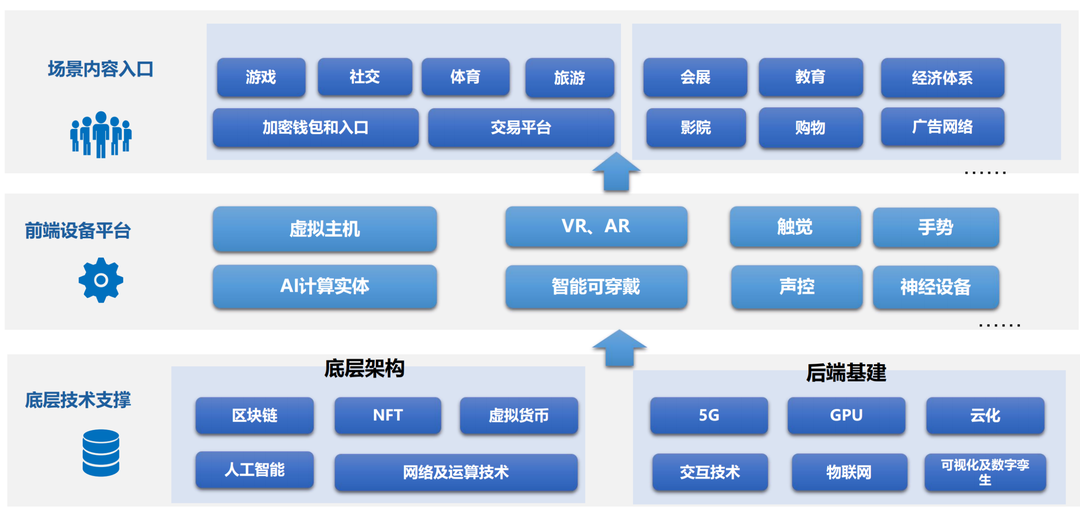
| What is the Metaverse?
The Metaverse was first proposed in the science fiction novel "Avalanche" in 1992, and this concept has returned to people's field of vision after the listing of Roblox US stocks in March 2021, becoming a global hot spot and receiving high attention from the industry and capital market. .

Metaverse is the sum of the next-generation Internet and broader digitalization. It is characterized by 3D, UGC, and longer online time. It includes the comprehensive application of XR/AI/5G and other technologies in the C-end and B-end, and ultimately points to the future digital survival of mankind. .

Presentation method: From 2D to 3D, perception interaction brings immersive experience, and the combination of virtual and reality will be closer.
Content Creation: From PGC to UGC, Internet companies develop from platforms to infrastructure, and users can become both consumers and producers.
User experience: With the digital transformation of all walks of life, human online time is greatly extended, and the two promote each other.
|The Communication Foundation of Metaverse: 5G Penetrates Many Application Scenarios
5G empowers all walks of life and digitizes the entire industry. Different from 2G-emergence data, 3G-born data, and 4G development data, 5G-enabled data—transmitting optical fiber transmission speed, surpassing the real-time capability of industrial buses and full-space connection, enables the digitization of the entire industry, and becomes the basic productivity, capable of To support the massive amount of applied innovation needed to support the Metaverse.
At present, the "killer application" based on 5G has not yet appeared, so the market demand and penetration rate are not high. With its rich content and strong social attributes, Metaverse may open up the public demand gap for 5G and improve the coverage of 5G networks.
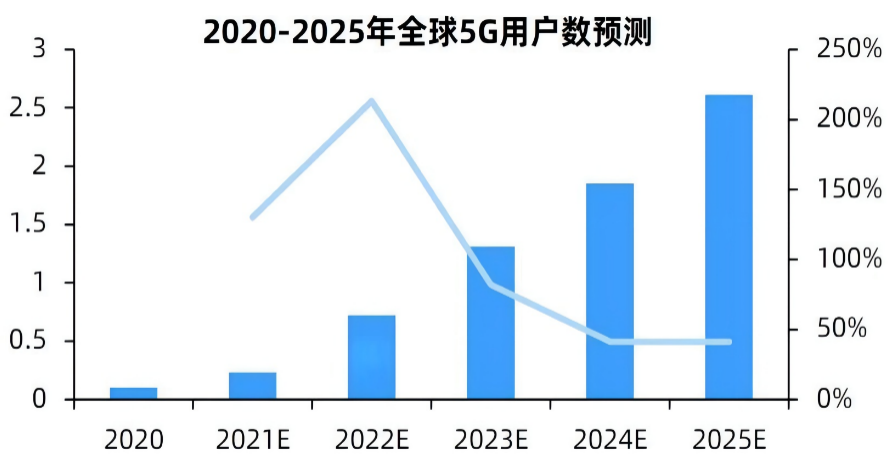
|Technical base of Metaverse: Rapid growth of intelligent computing power supply
In 2020, the total size of global computing power will increase by 39% year-on-year, and the scale of computing power will increase by more than 30% for three consecutive years. The development pace of computing power in China is similar to that of the world. In 2020, the total scale will reach 135EFlops, accounting for 39% of the global computing power scale, achieving a growth of 55%, and maintaining a growth rate of more than 40% for three consecutive years.
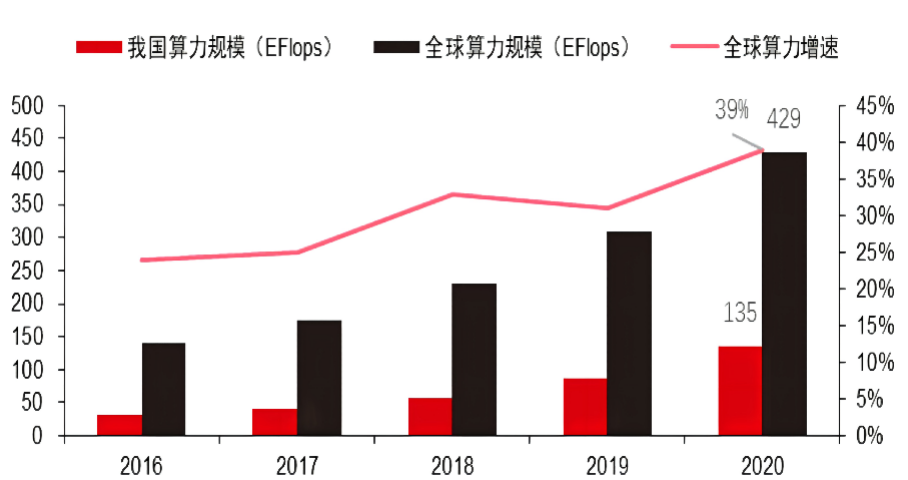
Artificial intelligence has benefited the most, and the proportion of intelligent computing power has grown rapidly. The proportion of intelligent computing power in China has increased from 3% in 2016 to 41% in 2020. It is estimated that the demand for artificial intelligence computing power in 2030 will be equivalent to 160 billion Qualcomm Snapdragon 855 built-in AI chips, which is about 390 times that of 2018. , about 120 times in 2020.
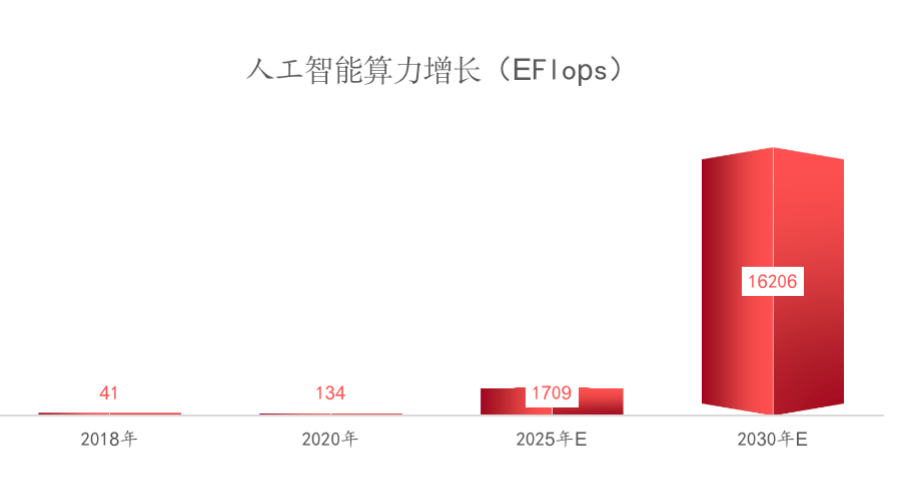
|Technical base of the Metaverse: Cloud computing prices continue to decline
On the whole, the standardized price of each product of YuanCompute has dropped significantly . According to ICEAA data, after normalizing the prices of multiple Linux and RHEL products, it was found that the normalized prices dropped by 44% from 2013 to 2018, with an average annual decrease of 8.5%, where the downward slope of the curve indicates that the new generation of products is more expensive than the previous generation. Product prices are lower.

In terms of subdivided products, the prices of standard-performance computing power and medium- and high-performance computing power products have decreased. Taking AWS and Google as examples, the price of an m1.large product with 2 vCPUs, 2 ECUs and 7.5GB has dropped from about $0.4/hour in 2008 to about $0.18/hour. And Google's n1-standard-8 with 8 vCPUs and 30GB of memory also dropped from $0.5/hour in 2015 to $0.38/hour.
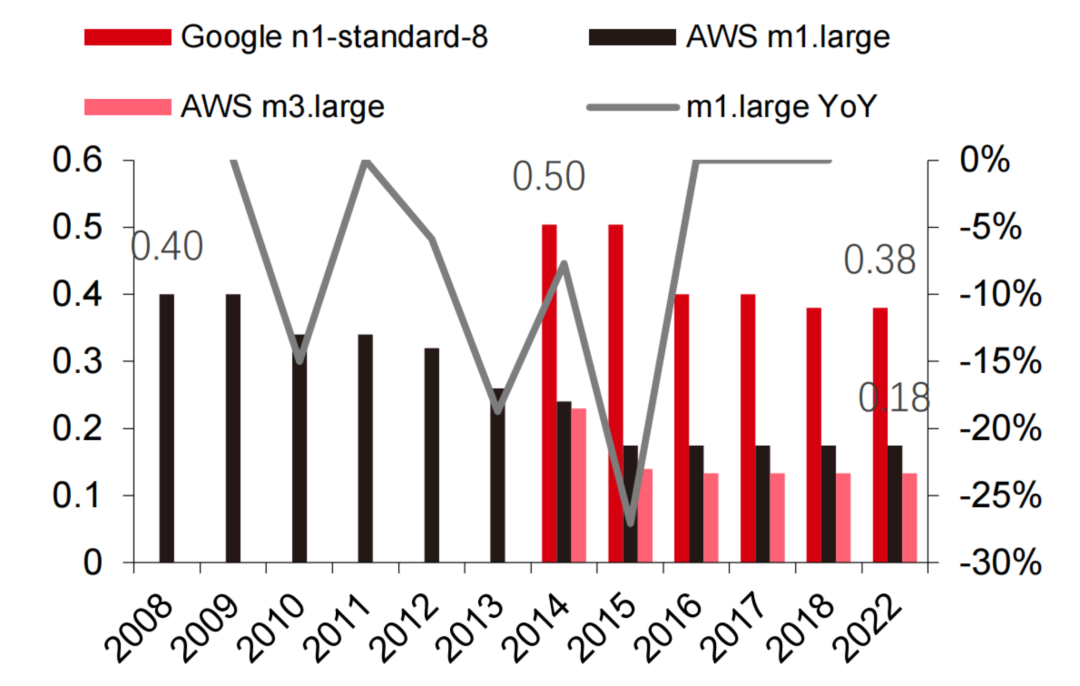
|Generation logic of the metaverse: artificial intelligence software and hardware are constantly being upgraded
Hardware: Thanks to the increase in the computing power of AI chips, the cost and time of global AI training have been greatly reduced. Taking NVIDIA as an example, the computing power of AI chips has increased by about 315 times in the past 9 years, driving the cost of AI hardware training to drop by about 55% in the past five years, and the training time has been reduced overall. Benefiting from the wide application of accelerator chips, taking ImageNet as an example, the maximum model training time is reduced from 10,000 minutes in 2018 to 1 minute in 2020, and the minimum value is reduced from 9 minutes to 0.6 minutes.

Software: Extending from CV (Computer Vision) to NLP (Natural Language Processing). The improvement of the underlying computing power has made a huge breakthrough in computer vision, and extended to natural language processing. The data types that can be processed also extend from images to texts, which has spawned practical application scenarios such as search engine optimization and recommendation algorithms. On the NLP language test task, the AI outperformed the "human baseline" with a score of 90.3.
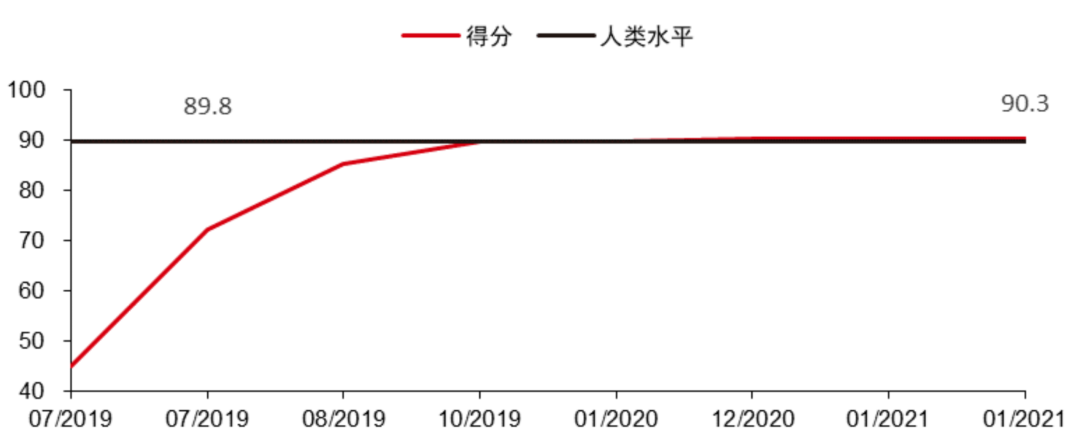
|The virtual-real interface of the metaverse: XR technology is maturing
VR/AR is positioned as the next-generation terminal. The VR inflection point has come, AR has made progress in the B-end, and the C-end is about to be implemented. At present, the VR equipment represented by Oculus2 took the lead in realizing the market outbreak, mainly due to the increase in VR demand under the epidemic and the concept of the Metaverse + the current mainstream equipment parameters have met the basic experience requirements, and the equipment prices have dropped and the VR giant content ecological construction has achieved outstanding results. AR has made significant progress in the B-end field, waiting for consumer-grade products to drive shipments.
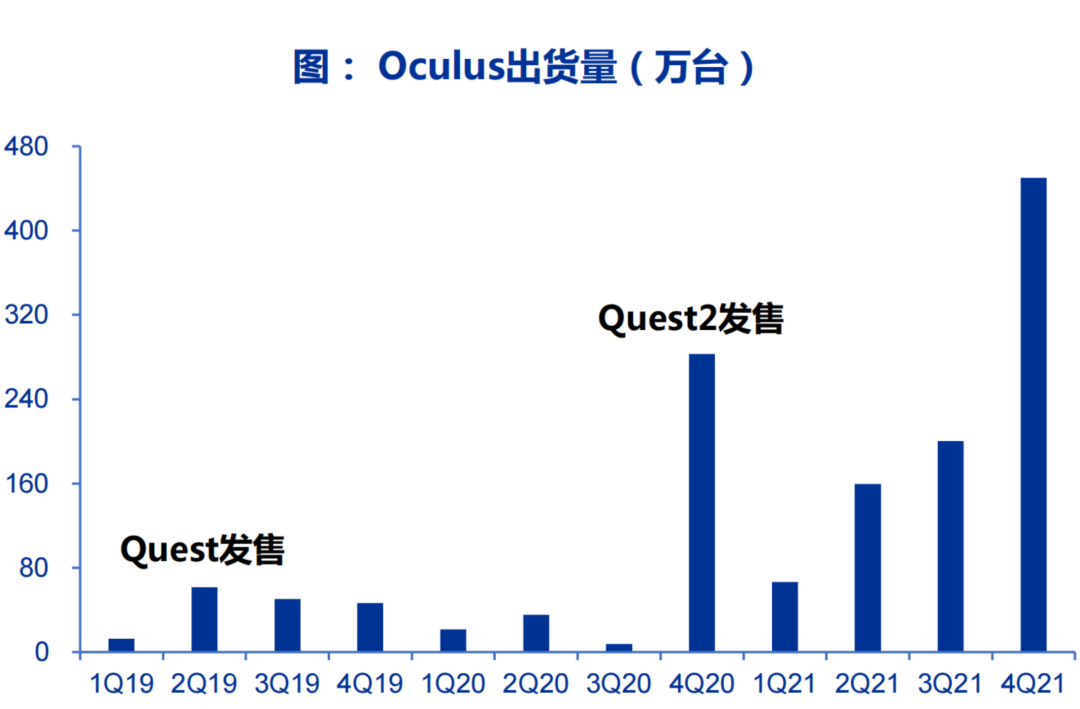
AR/VR equipment shipments fluctuate, and the market size is expected to grow rapidly. From the perspective of the supply side, the long-term VR/AR market space can be compared to the smartphone level. In the short-term analogy to smartphone shipments, VR/AR shipments are expected to reach 100 million units for the first time in 2025; from the demand side, the VR application market is vast, starting with games, not just games. In the short-term, attention is paid to B-side application expansion, and long-term needs are still needed. Wait for the C terminal to land.

According to Greenlight's calculations, the global AR industrial application market in 2019 will exceed US$300 million, and it is estimated that the AR industrial market will reach US$2.85 billion in 2023. From 2018 to 2023, the global AR/VR industrial application market will maintain a high-speed compounding rate of 83.5%. The average annual growth rate, AR occupies a dominant position and the growth rate is more significant.
|The World Blueprint of the Metaverse: Digital Twins Promote Industrial Informatization
A digital twin is a dynamic twin of real things in a virtual space. With the help of sensors, the operating state of the ontology and external environment data can be mapped to the twin in real time. The technology was originally used in industrial manufacturing, and the Metaverse needs digital twins to build immersive, immersive, immersive environments that create immersive, immersive environments.
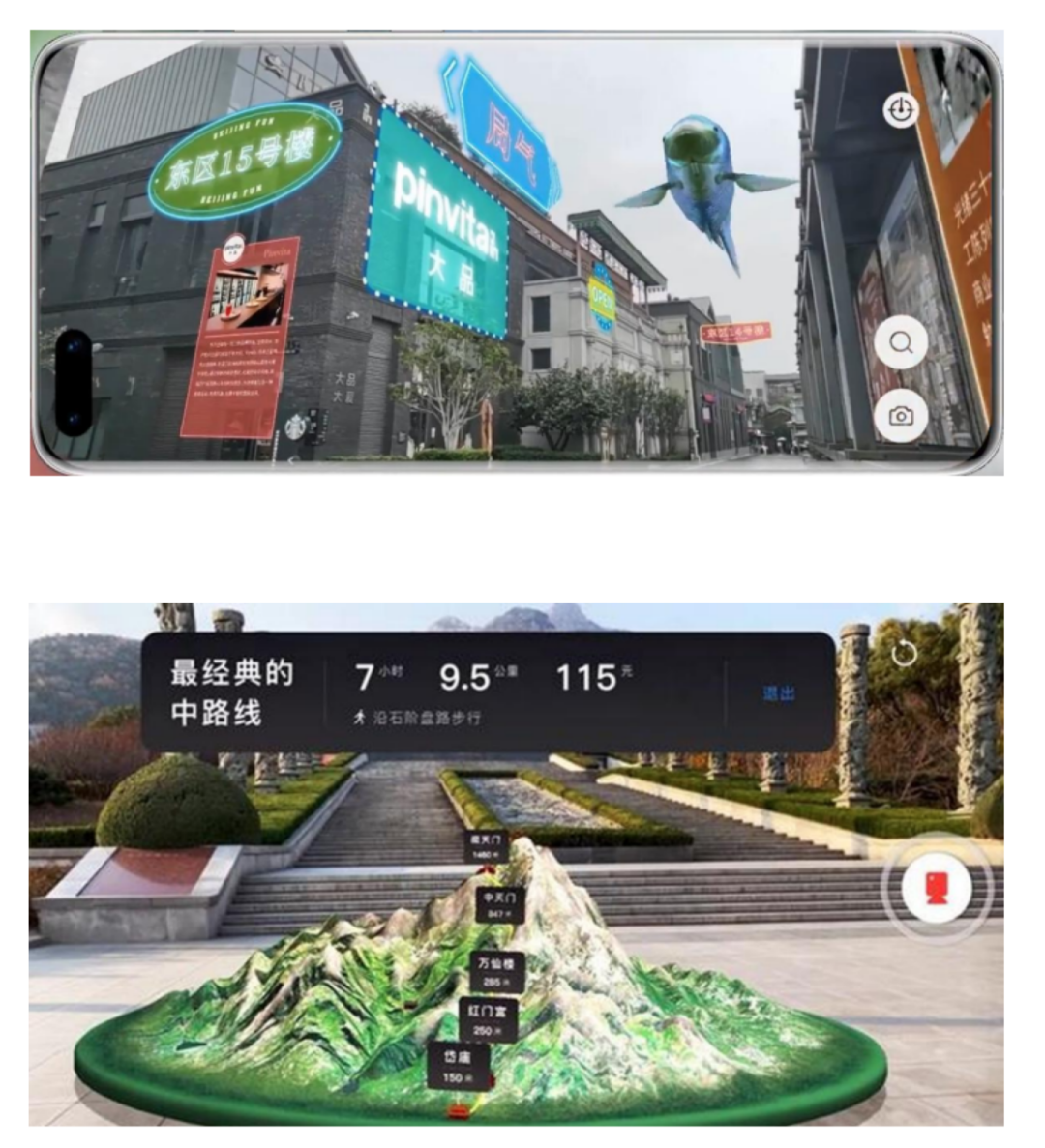
Driven by emerging technologies, the future of digital twins is vast. With the continuous development of technologies such as the Internet of Things, artificial intelligence, and big data, and stimulated by the development of global machinery manufacturing, aerospace, and smart cities, the digital twin industry is rapidly growing. It has grown from $5.22 billion in 2020 to $26.46 billion, with a compound annual growth rate of more than 38.35%.
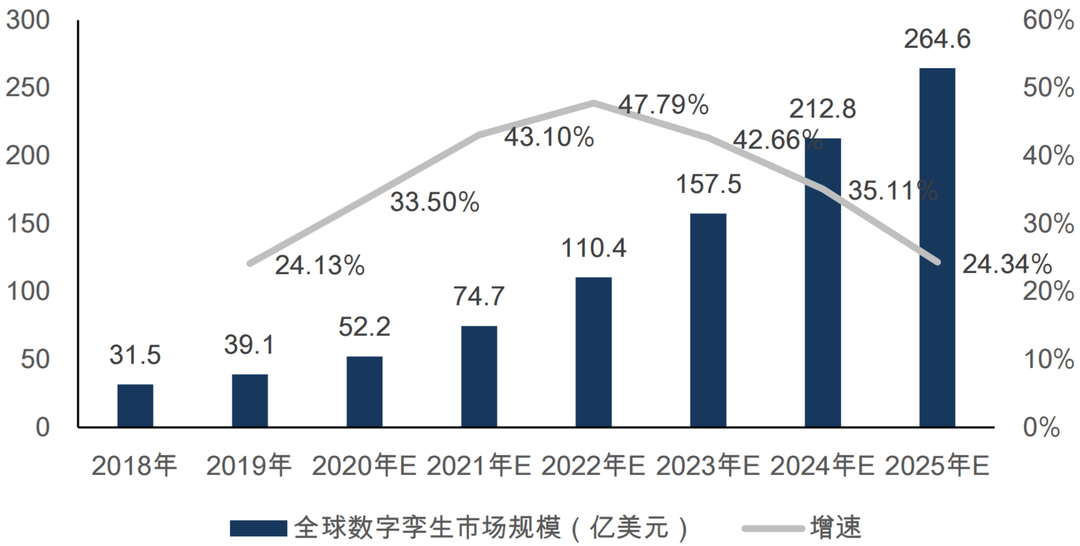
|The Authentication Mechanism of Metaverse: Blockchain Creates Circulation Rules
Blockchain technology is a distributed network data management technology. It uses cryptography technology and distributed consensus protocol to ensure the security of network transmission and access, and realizes multi-party data maintenance, cross-validation, network-wide consistency, and is not easy to be tampered with. As an important evolution of the new generation of information and communication technology, data cannot be tampered with, transparent and traceable, etc., so that blockchain technology is becoming an infrastructure to solve the mutual trust between participants in the industry chain. Building a credit value network will surely help the global economy recover. and play an increasingly important role in the development of the digital economy.
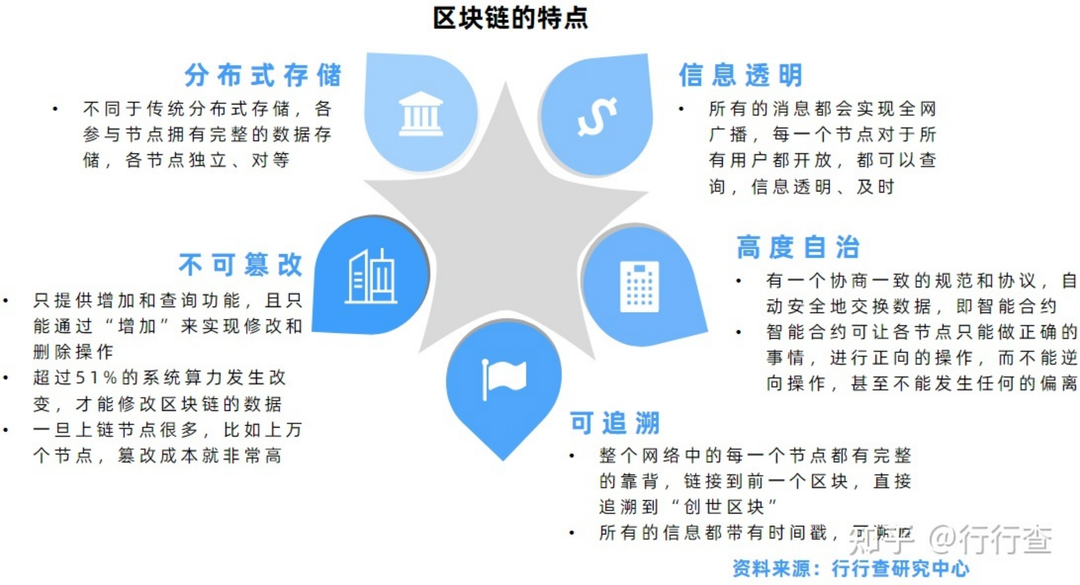
The virtual currency based on the decentralized network makes the attribution, circulation, realization and authentication of virtual identity possible in the metaverse. It has the advantages of stability, high efficiency, transparent rules and certainty. In addition, NFT (Non-Fungible Token) has a natural collection property due to its unique, non-replicable and non-detachable characteristics, so it can be used to record and trade some digital assets, such as game props, artworks, etc.

|The ecological map of the Metaverse is becoming more and more mature
